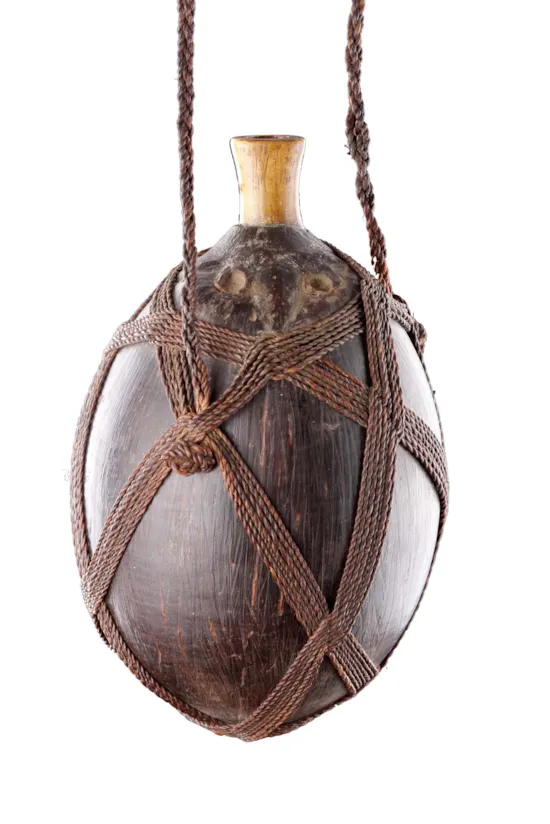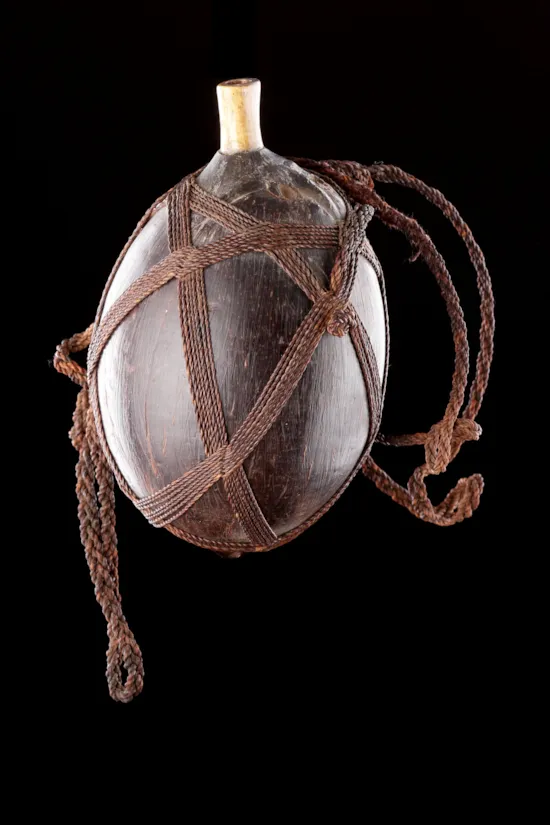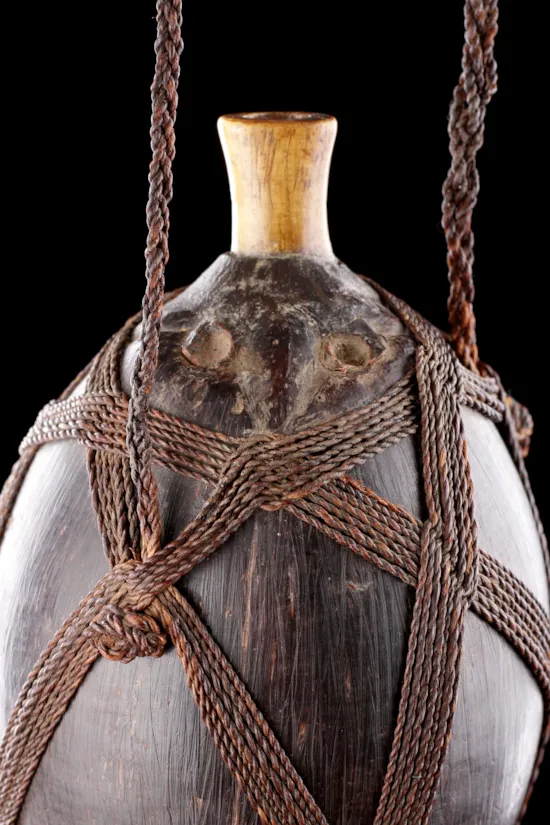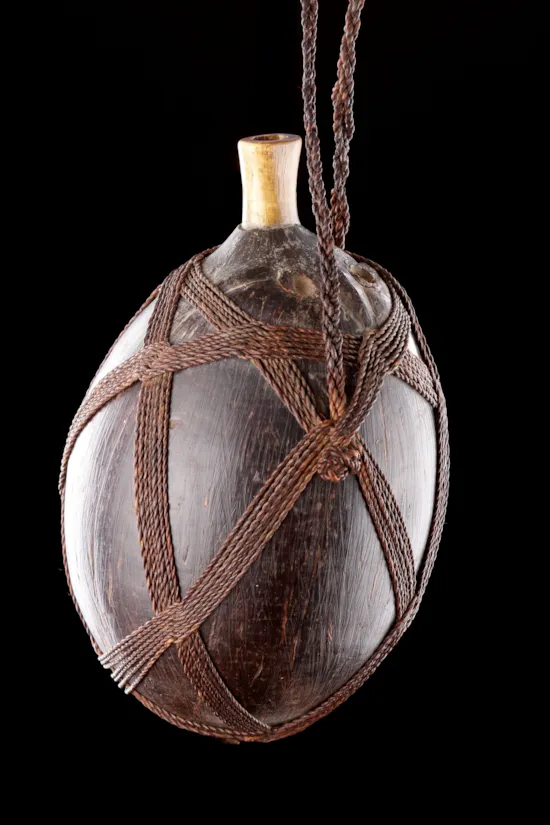Oceanic New Caledonian Kanak Coconut Flask with a Spout Made From Human Bone and Bound with Finely Braided Coir Sennit
A Rare Oceanic New Caledonian Kanak Coconut Flask with a Spout Made From Human Bone and Bound with Finely Braided Coir Sennit
19th Century
Size: 8cm high, 8cm wide, 14cm deep - 3 ins high, 3 ins wide, 5½ ins deep
19th Century
Size: 8cm high, 8cm wide, 14cm deep - 3 ins high, 3 ins wide, 5½ ins deep
A Rare Oceanic New Caledonian Kanak Coconut Flask with a Spout Made From Human Bone and Bound with Finely Braided Coir Sennit
19th Century
Size: 8cm high, 8cm wide, 14cm deep - 3 ins high, 3 ins wide, 5½ ins deep
19th Century
Size: 8cm high, 8cm wide, 14cm deep - 3 ins high, 3 ins wide, 5½ ins deep
This flask may have functioned as a ritual container for potent medicinal substances from foraged plants whose amuletic powers protected the wearer from harm. Comprising numerous islands in the South Western Pacific Ocean, Captain Cook was the first European to discover them on his second voyage in 1774. He named the area ‘New Caledonia’ as the northwest of the island was remarkably like that of Scotland. By 1840, the first missionaries from the London Missionary Society arrived and unexpectedly found cannibalism to be widespread in the Islands. In 1849, the entire crew of an American ship called ‘Cutter’ was killed and eaten by the Pouma people. In 1853, New Caledonia was annexed by the French and the indigenous Kanak were excluded from the developing economy, ultimately being confined to reservations. New Caledonia still remains under French political authority.
cf: Musée de l'Homme Paris has a similar example collected in 1874 (71.1930.20.26.1-2)
Oceanic New Caledonian Kanak Coconut Flask with a Spout Made From Human Bone and Bound with Finely Braided Coir Sennit
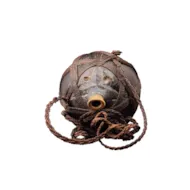
SOLD
